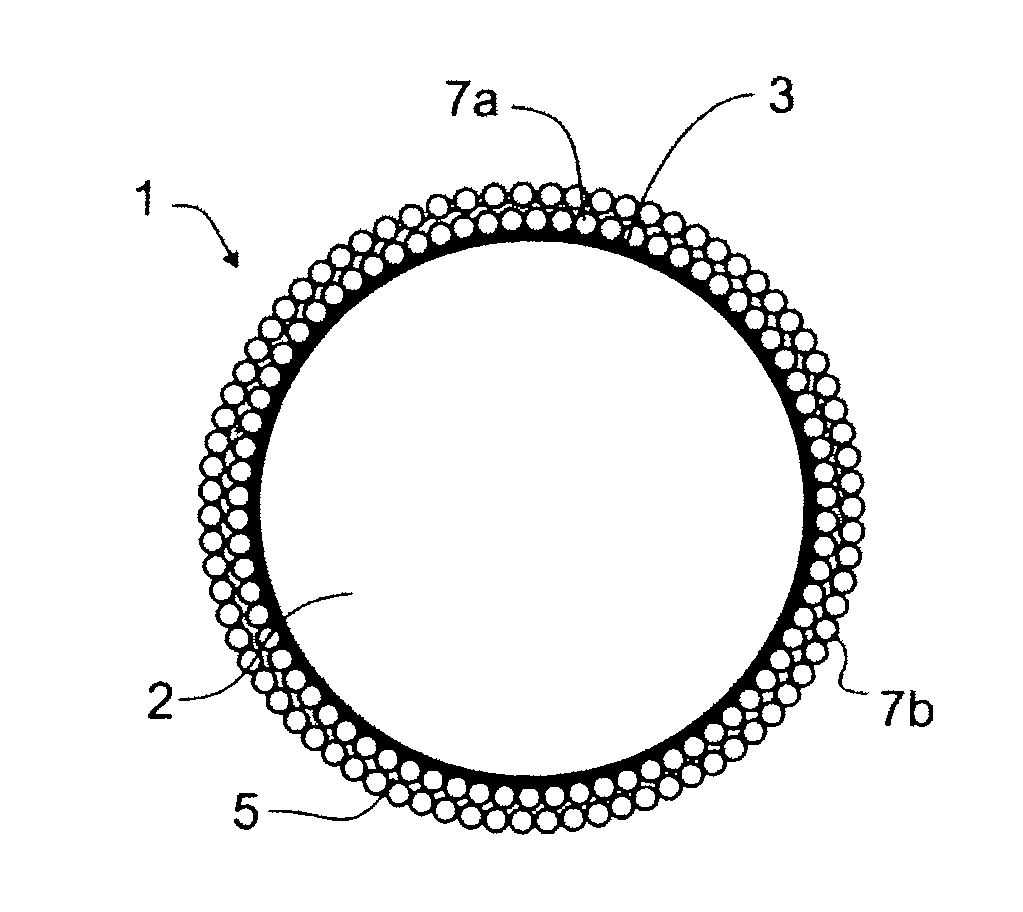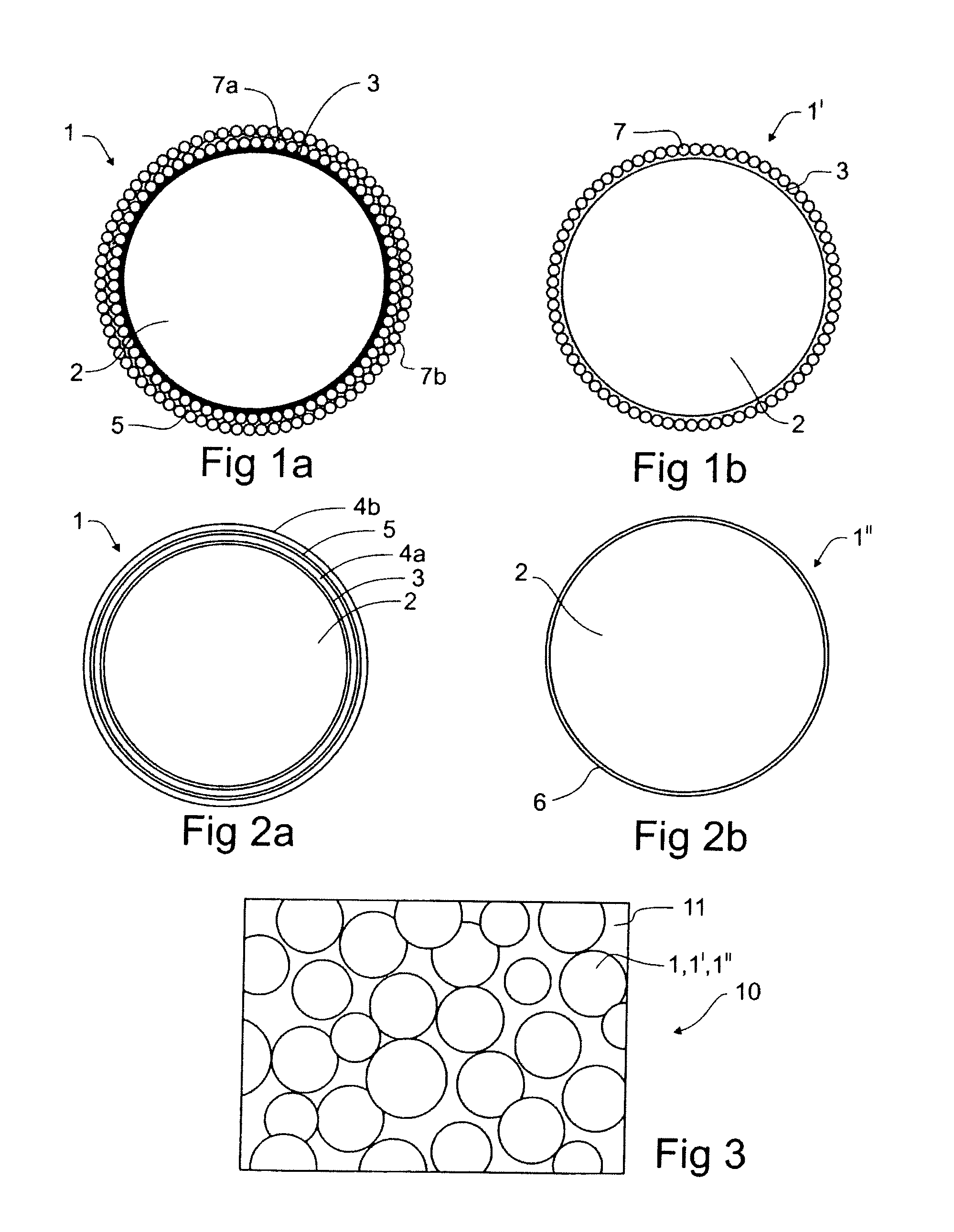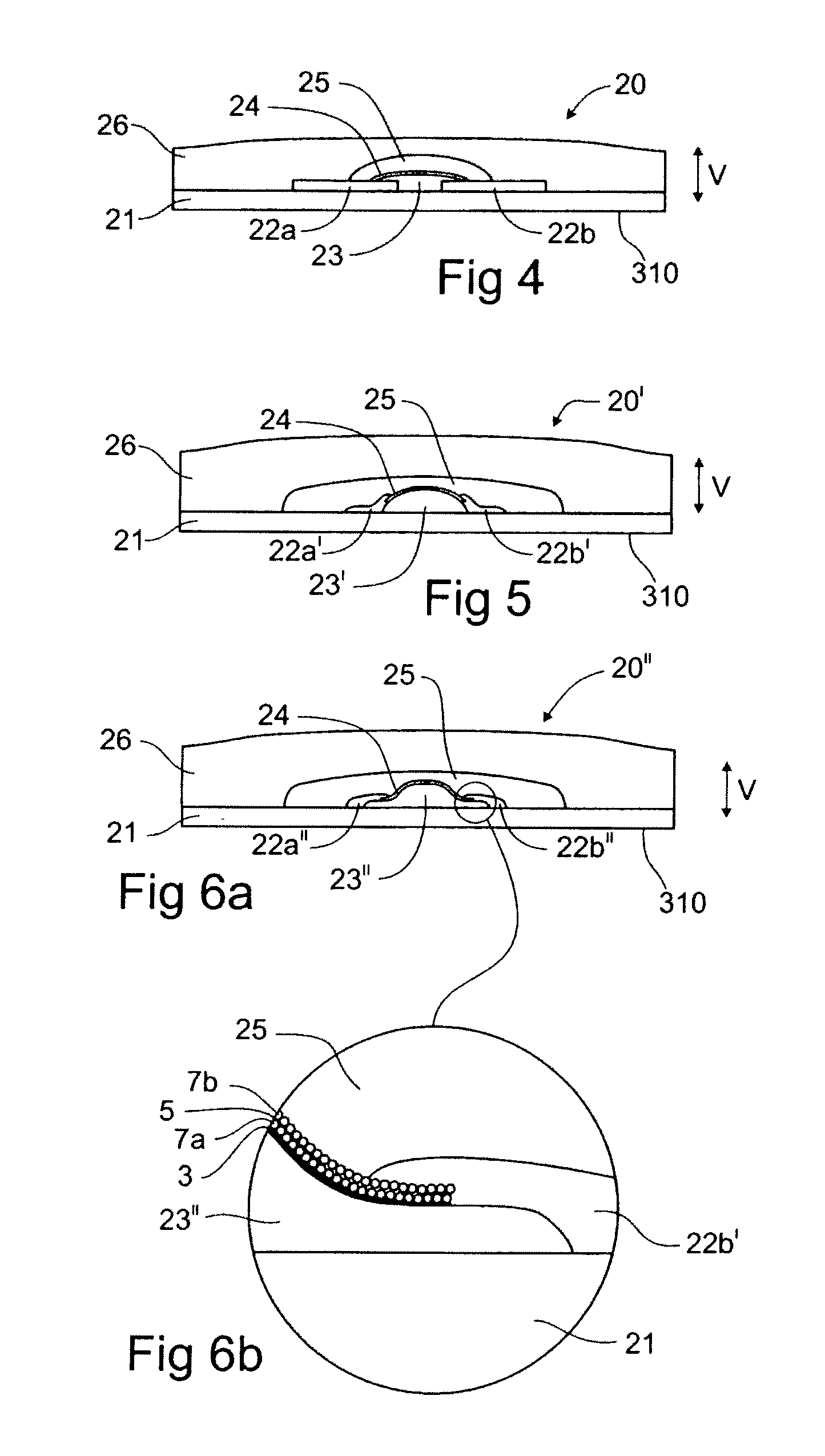Elastomeric particle having an electrically conducting surface, a pressure sensor comprising said particles, a method for producing said sensor and a sensor system comprising said sensors
a technology of electrical conductivity and elastomeric particles, applied in the field of pressure sensors, can solve the problems of quiescent impedance, mismatched mechanical properties, and available systems for measuring pressure on body parts, and achieve the effects of reducing creep, hysteresis and/or electrical aging, and reducing creep
- Summary
- Abstract
- Description
- Claims
- Application Information
AI Technical Summary
Benefits of technology
Problems solved by technology
Method used
Image
Examples
first embodiment
[0108]FIG. 4 schematically illustrates a pressure sensor element 20. The drawing is magnified, and the vertical direction V is greatly exaggerated. The measurement side is indicated by reference numeral 310. The sensor element 20 is based on a substrate 21, upon which a pair of electrodes 22a, 22b are arranged. The electrodes may, but do not need to, be co-planar. Electrodes 22a, 22b may be provided by patterning a conducting material onto the substrate / first elastomeric portion in any known manner. A first nonconducting elastomeric portion 23 is arranged between the electrodes. The first elastomeric portion 23 may cover opposing edge portions of the electrodes 22a, 22b and it may have a maximum thickness which is larger than that of the electrodes. The thickness of the first elastomeric portion 23 may taper or otherwise diminish towards its edges.
[0109]On the first elastomeric portion 23, one or more conducting layers 24 may be arranged. Such conducting layers may comprise elastome...
second embodiment
[0141]FIG. 8 schematically illustrates a sensor element 30′, which is similar to the one of FIG. 7, but provided with a second substrate 31a, with a third electrode 32c. The second substrate is spaced from the first substrate, and may be “floatingly” arranged in the composite material 33. The second substrate 31a with its associated electrode may be produced in the same way as the first substrate 31. The third electrode 32c can be used to facilitate preferential alignment within the composite material 33 during fabrication, augment the electrical impedance of the sensor element 30, provide more suitable area within the composite material 33 where impedance measurements can be taken, preferentially spread applied stress over the composite material 33, provide a means of measuring pressure gradients applied to the sensor element 30, or electrically shield the sensor element 30 from the surroundings.
third embodiment
[0142]FIG. 9 schematically illustrates a sensor element 30″, wherein a non-conducting elastomeric portion 35 is provided between the electrodes 32a, 32b in a manner similar to that of FIG. 4 or 5, e.g., in order to reduce stress concentrations around the edges of the electrodes, to control stresses in the composite material 33′, to separate the stress and field concentrations within the composite material 33′ and / or to facilitate preferential alignment in the composite material 33′ during fabrication of the sensor element 30″. The elastomeric portion 35 may be further foamed to alter the hardness and the Poisson's ratio of this portion of the sensor element 30″. This provides a further means of controlling pressure sensitivity of the sensor element 30″
[0143]Furthermore, in FIG. 9, the portion of the composite material 33′ extending between the electrodes 32a, 32b may be structured, e.g., made narrower, so as to further control sensitivity of the electrical impedance of the composite...
PUM
| Property | Measurement | Unit |
|---|---|---|
| thickness | aaaaa | aaaaa |
| thickness | aaaaa | aaaaa |
| thickness | aaaaa | aaaaa |
Abstract
Description
Claims
Application Information
 Login to View More
Login to View More - R&D
- Intellectual Property
- Life Sciences
- Materials
- Tech Scout
- Unparalleled Data Quality
- Higher Quality Content
- 60% Fewer Hallucinations
Browse by: Latest US Patents, China's latest patents, Technical Efficacy Thesaurus, Application Domain, Technology Topic, Popular Technical Reports.
© 2025 PatSnap. All rights reserved.Legal|Privacy policy|Modern Slavery Act Transparency Statement|Sitemap|About US| Contact US: help@patsnap.com



